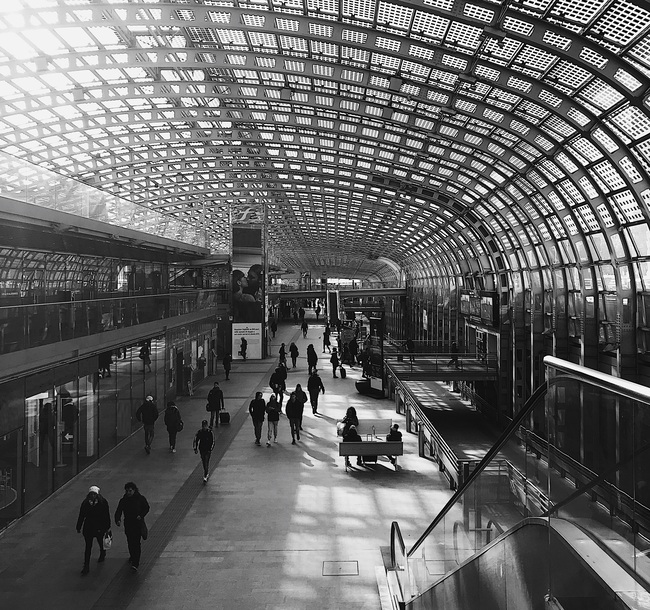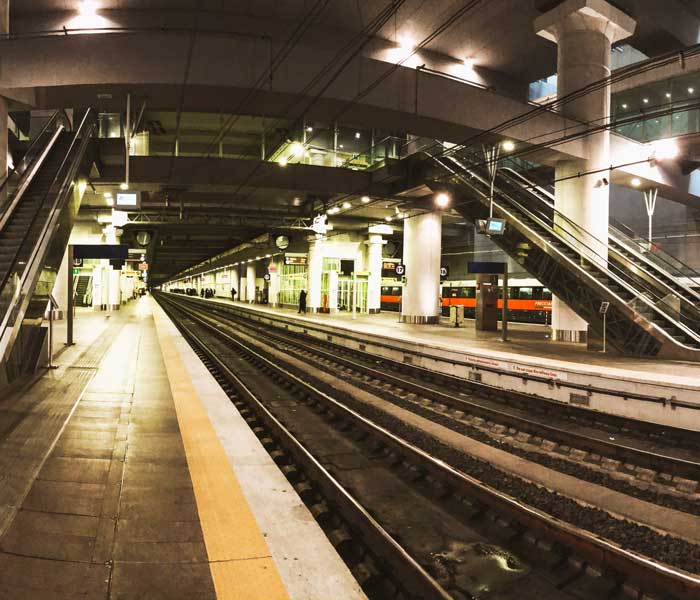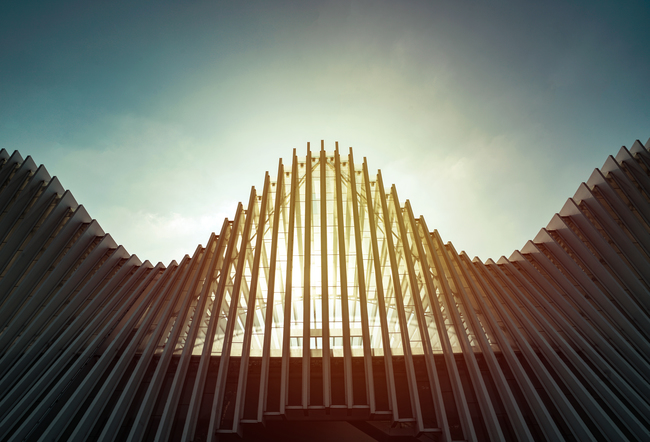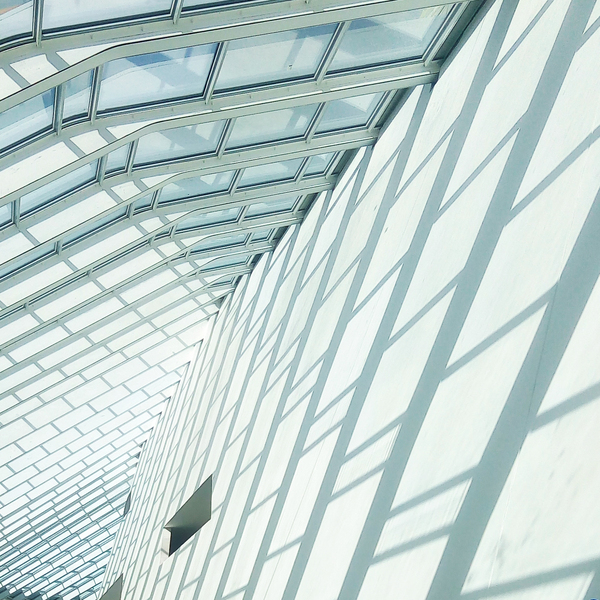Architectural excellence of Italian high speed
Designed by AREP - parent company Jean-Marie Duthilleul and Etienne Tricaud - with Silvio D’Ascia and Agostino Magnaghi, the Torino Porta Susa is comprised of an impressive and elegant gallery in steel and glass. The space unfurls with great harmony, integrating the various means of transport present within the area.

- 79 million euro in investments
- 385 m in length
- 30 m in width
- 37,000 m² of surface area
- 8,000 m² of technical services areas
- 7,700 m² of shopping areas (+700 m² of ticket offices)
- 13,000 m² of indoor pedestrian areas
- 19,400 m² of exterior glazing, of which 15,000 m² are covered by solar panels.
- 3,000 tonnes of steel
- 10 lifts
- 19 escalators
- 189 parking spaces extending 7,600 m²
- over 50 Frecce trains per day
Photo Credits: © Erica Marenchino
Bologna HS, as an Italferr and FS Italiane Group project, positioned 23 metres below ground and extending across three levels, is the keystone of the entire project to upgrade the Bologna hub.

- 77,500 m² of surface area
- 25,800 m² of platforms
- 14,800 m² for the HS hall
- 9,300 m² for parking
- 27,600 m² of Kiss&Ride area
- underground levels
- 41 m in width
- 23 m in depth
- 640 m in length for the underground opening
- 42 escalators
- 26 lifts
- 2 freight lifts to serve the fire brigade
- over 160 Frecce trains per day
Photo Credits: © Giuliana Rondina
Designed by Santiago Calatrava, it presents as a sinuous roof structure with steel portals covering the viaduct on which the HS train tracks run.

- 28,000 m² of surface area
- 2 levels
- 483 m in length
- 50 m maximum width
- 20 m average height
- 7,300 m² of platforms
- 500 m² of technical services areas
- 200 m² of shopping areas
- 2 escalators
- 4 panoramic lifts
- over 50 Frecce trains per day
Photo Credits: © Edoardo Cortesi
Roma Tiburtina
Designed by Paolo Desideri - ABDR Architetti, the station was conceived so as to be both an international railway station and pedestrian boulevard, as a hinge between Nomentano and Tiburtino - Pietralata, districts historically separated by the tracks.

- 920,000 m² of urban transformation, of which 324,000 concerns railway infrastructures
- 50,000 m² in surface area for the new station1,500 m² of primary services such as ticketing offices and lounges
- 7,000 m² of exterior glazing
- 15,000 m² of shopping areas
- 62,000 m² of piazzas and pedestrian spaces
- 63,500 m² of urban services
- 109,000 m² for parking
- 220,000 m² of roadway
- 25 lifts and freight lifts
- 52 escalators
- 1,100 parking spaces, of which 430 are covered
- 13,400 tonnes of steel utilised
Photo Credits: © PHOTO | FS Italiane
Napoli Afragola is a project by Zaha Hadid. The British archistar of Iraqi origin imagined a sinuous structure that abstractly recalls the image of a modern train in motion. A veritable hub in the heart of the Naples' metropolitan area.

- 30,000 m² of surface area
- 10,000 m² shopping areas
- 150,000 m² of outdoor areas
- 1,500 parking spaces
- 8 bus bays
- 30,000 m3 of concrete
- 4,500,000 kg of steel
- 5,600,000 kg of
- metal structurework
- 20,000 m² of
- roofing panels
- 6,000 m² of glass panels
- over 50 Frecce trains per day
Photo Credits: © Laura De Micco